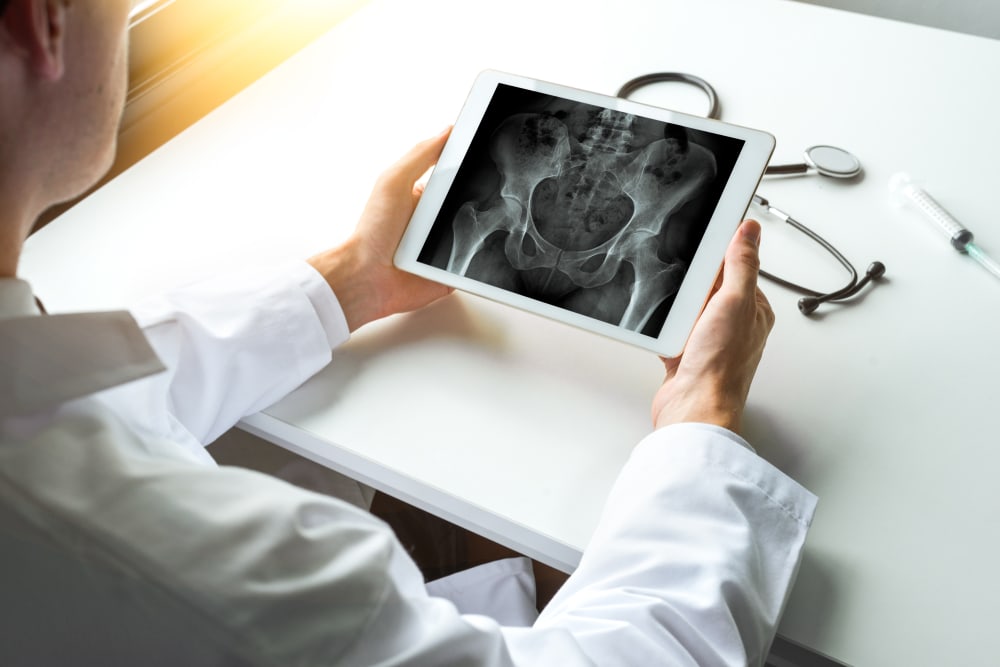The Orthopedic Delusion that Hip Impingement Should Be Operated

Credit: Shutterstock
One of the more bizarre trends of the past decade-plus has been the idea that we should be operating on people with Hip Impingement. I’ve been a big critic for two reasons. First, it makes no common sense. Second, the science doesn’t support that we should be doing this to patients. Today we’ll cover a paper that continues to question the wisdom of this insanity. Let’s dive in.
What Is Hip Impingement and FAI?
The idea that has been pushed by orthopedic surgeons and beaten into the minds of millions of people over the past decade is that some people are born with misshapen hips that cause severe impingement and that this problem must be operated on to correct the deformity, thus “saving” the hip from an almost certain hip replacement. To learn more, watch my video below:
Why Is This a Generally Dumb Idea
Orthopedic hip surgeons will describe to patients that they must remove “bone spurs” that are eating up the hip with every movement (1). For a patient it’s a scary thought that each and every movement could be causing the hip to be damaged and degenerate. However, these bone spurs are caused by extra forces on unusual parts of the joint and are the body’s very normal reaction to that stress. Hence, removing them without figuring out why that stress is there is just plain nonsensical and dumb. Meaning, they will just come right back.
Why the Science Doesn’t Support this Removal of Bone Spurs
There are diagnostic criteria that help surgeons make the decision to operate. These are very specific measurements on X-rays and MRI that show that FAI is present (femoroacetabular impingement). What do we know about these measurements? This is what’s been published:
- A study out of Norway looked at more than two thousand young adults without any reported hip pain (2). The researchers identified that more than 50% had hip FAI based on MRI measurements. Hence, if your diagnostic criteria for your disease is found in lots of normal healthy people without hip pain, your diagnostic criteria for that disease doesn’t hold water.
- A study performed in the US also demonstrated that about a quarter of the hip MRIs in normal people without any hip pain had FAI (3)!
- A study out of Latin America looked at almost two thousand hips on MRI, again in patients without hip pain, and found that 1/4 to 1/3 met the diagnostic criteria for hip FAI (4)
Hence, if a high number of people without pain meet the criteria for a hip operation, what the heck are we doing?
The Most Recent Hip FAI Paper
A 2021 study published in a physical therapy journal recruited 184 soccer and Australian football players who had reported hip pain for more than 6 months and positive physical exam findings for “impingement” (5). They also recruited 55 football players who had no reports of hip pain. X-rays were taken of both groups. Again, the researchers couldn’t tell who was in the hip pain group versus the normal asymptomatic controls based on these common hip FAI measurements (alpha angle and LCEA). Meaning, using hip pain and positive FAI measurements as a reason to operate is NOT supported by the research.
The upshot? Hip pain and an X-ray or MRI that has positive hip FAI measurements is NOT a valid reason for operating. Neither is hip pain+imaging+physical exam findings. So why again are we operating on a million-plus hips a year for FAI? Your guess is as good as mine.
_____________________________________
(1) Westermann RW, Day MA, Duchman KR, Glass NA, Lynch TS, Rosneck JT. Trends in Hip Arthroscopic Labral Repair: An American Board of Orthopaedic Surgery Database Study. Arthroscopy. 2019 May;35(5):1413-1419. doi: 10.1016/j.arthro.2018.11.016. Epub 2019 Apr 9. PMID: 30979629.
(2) Laborie LB, Lehmann TG, Engesæter IØ, Eastwood DM, Engesæter LB, Rosendahl K. Prevalence of radiographic findings thought to be associated with femoroacetabular impingement in a population-based cohort of 2081 healthy young adults. Radiology. 2011 Aug;260(2):494-502. doi: 10.1148/radiol.11102354. Epub 2011 May 25. PMID: 21613440.
(3) Jung KA, Restrepo C, Hellman M, AbdelSalam H, Morrison W, Parvizi J. The prevalence of cam-type femoroacetabular deformity in asymptomatic adults. J Bone Joint Surg Br. 2011 Oct;93(10):1303-7. doi: 10.1302/0301-620X.93B10.26433. Erratum in: J Bone Joint Surg Br. 2011 Dec;93(12):1679. PMID: 21969426.
(4) Morales-Avalos R, Tapia-Náñez A, Simental-Mendía M, et al. Prevalence of Morphological Variations Associated With Femoroacetabular Impingement According to Age and Sex: A Study of 1878 Asymptomatic Hips in Nonprofessional Athletes. Orthopaedic Journal of Sports Medicine. February 2021. doi:10.1177/2325967120977892
(5) Heerey J, Agricola R, Smith A, Kemp J, Pizzari T, King M, Lawrenson P, Scholes M, Crossley K. The Size and Prevalence of Bony Hip Morphology Do Not Differ Between Football Players With and Without Hip and/or Groin Pain: Findings From the FORCe Cohort. J Orthop Sports Phys Ther. 2021 Mar;51(3):115-125. doi: 10.2519/jospt.2021.9622. Epub 2020 Dec 25. PMID: 33356776.

If you have questions or comments about this blog post, please email us at [email protected]
NOTE: This blog post provides general information to help the reader better understand regenerative medicine, musculoskeletal health, and related subjects. All content provided in this blog, website, or any linked materials, including text, graphics, images, patient profiles, outcomes, and information, are not intended and should not be considered or used as a substitute for medical advice, diagnosis, or treatment. Please always consult with a professional and certified healthcare provider to discuss if a treatment is right for you.
